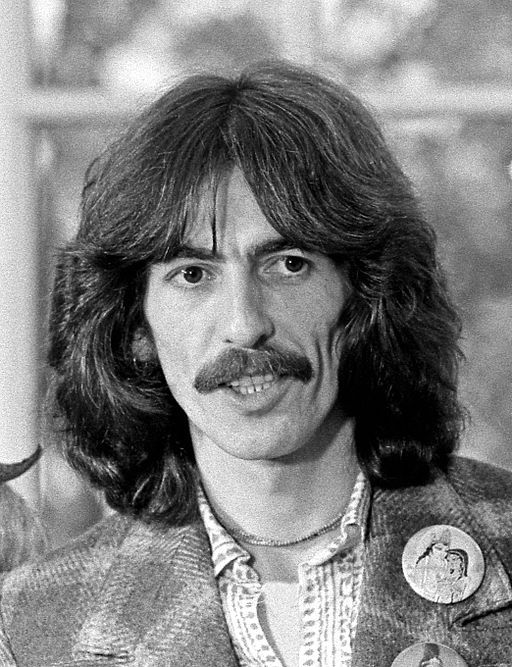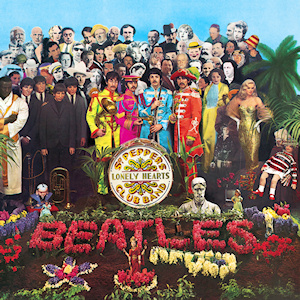If you are reading this, you’re probably vaguely familiar with the notion of yoga.
You are also probably familiar with the notion of The Beatles, and if you’re not, it’s time to discard that rock you’ve been living under.
What do these two concepts have in common?
The Beatles were a huge influence in bringing yoga to the West, but is there more to this connection than just four super-famous and influential guys taking an interest?
These days yoga is becoming more popular worldwide, often an integral part of exercise regimes, whether you have a self-practice, a regular teacher at your local studio, or some at-home DVDs. It is a common practice, whether we use it for physical, emotional or spiritual benefits, or all of the above.
Whilst yoga originated in India thousands of years ago, it was only introduced to the West (in a dominant way) in the 20th Century. It was first introduced as a study of Eastern philosophy, and then tied into the Health and Vegetarian movement of the 1930s.
But, essentially it really took off in the 60’s, thanks in-part to four lads from Liverpool.
The Beatles first met Swami Vishnudevananda when they were filming the movie Help!, in the Bahamas in 1956. He was the founder of Sivananda Yoga, which is still a popular and well established yoga school today.
George Harrison was the Beatle who took the most interest, and began studying Eastern philosophy and religion. In 1966, George went to India to study the sitar with the legendary Ravi Shankar. During this time, he studied the books of Paramahansa Yogananda and Swami Vivekananda.
Both Harrison and his wife, Pattie Boyd, pursued their interest in yoga and Eastern philosophy, and became fascinated by Maharishi Mahesh Yogi, the founder of Transcendental Meditation. The Maharishi wanted to make meditation accessible, understandable and practical for all through his book, The Science of Being and the Art of Living. In 1958, he began teaching Transcendental Meditation.
On the recommendation of Harrison and Boyd, the Beatles went to Bangor, Wales to learn meditation with the Maharishi. In 1968, they also voyaged to Rishikesh in the Himalayas of India, to the Maharishi’s ashram to study in-depth Transcendental Meditation.
At the time, this was big news. The world took an interest in this new phenomenon which these four famous faces had become so intrigued by. Of course, at this point, the Beatles were a huge force in popular culture. In any culture, in fact.
They were big. Bigger than big. Bigger than Jesus, some say…but I believe John when he claims he was misquoted, so let’s leave that one as it is. When the Beatles grew beards, so did the rest of the world. When the Beatles smoked pot, well…that was just a good excuse for many in the 60’s. And when the Beatles showed an interest in yoga, the world stopped and listened.
During their time at the ashram in Rishikesh, they were also joined by various other celebrities including Mia Farrow and a couple of the Beach Boys. The trip supposedly became quite intense; much of the time was spent learning in a group, or meditating in a group.
Mia Farrow’s sister, Prudence, took to her room to meditate alone for the majority of the time, she locked herself away for a long time. In fact, John Lennon was asked to encourage her out, and (I’m sure you know where this is going) he wrote the song: Dear Prudence. In the song, Lennon asks Farrow to “open up your eyes” and “see the sunny skies” reminding her that she is “part of everything.”
John wrote many songs whilst in India which referenced his time with the Maharishi. Most of these songs ended up on The White Album.”Yer Blues,” which is one of the few blues songs by the Beatles was, according to Lennon, about “trying to reach God, and feeling suicidal.”
The trip to India ended on a sour note, as the Beatles fell out with the Maharishi when John accused him of molesting Mia Farrow. These allegations were unproven and no charges were made.
Some claim that it was the Beatles use of LSD and other drugs in the ashram that caused the fallout, but either way, the relationship seemed to fall apart. John wrote two songs about this period: “Everyone’s Got Something to Hide,” which was inspired by the Maharishi, and “Sexy Sadie,” which was a response to the alleged scandal in India.
Once the Beatles returned from India, it seemed that this had simply been a phase for three of them.
George, however, continued his passion for yoga and meditation (he was the only Beatle to later make amends with the Maharishi). He frequently wanted to discuss his spiritual beliefs, and the media claimed “The quiet Beatle is no longer so quiet.”
When long-term Beatles manager Brian Epstein passed away, Harrison is quoted as saying: “There’s no such thing as death anyway, I mean, it’s death on a physical level, but life goes on everywhere, and you just keep going up really.” When John Lennon was murdered, Harrison referenced the Bhagavad Gita, and turned to his Hindu beliefs.

By the 1970s, more than five million people were practicing Transcendental Meditation, the Beatles had helped to popularise the Maharishi’s teachings and create a big following in the West. The media frenzy surrounding the Beatles new interest had helped to bring words like mantra, guru, ashram and meditation into the mainstream.
Harrison was a Beatle, a hugely famous and influential star, and so long as he was interested, other people would be too. Many say he was a spiritual mentor to millions; his ashes were, fittingly, scattered in the Ganges.
The Beatles’ music around this time was evidently profoundly influenced by their trip to India.
The White album was heavily laden with inspiration from the Maharishi’s words and the Beatles’ experience with Transcendental Meditation.
Of the few Harrison tracks which wound up on various albums, several of them have the obvious muse of Eastern sounds, many using the Sitar. One particular track is “The Inner Light,” which is said to be the last of the India-inspired songs (but ironically, the first Harrison song to be used as a Beatles single), before George moved on to a more rock-based approach.
The B-side (remember B-sides? Yes, we’re old) to the better-known “Lady Madonna,” was based on the 47th chapter of the Tao Te Ching. However, probably Harrison’s most famous Eastern-sounding track was “Within You Without You,” from the Sergeant Pepper’s Lonely Hearts Club Band album; it shows a specific influence of Indian classical music, with a string section, tambura, sitar, dilruba, tabla and had extensive production.
So why were the Beatles so huge?
Well, they arrived on the scene a floppy-haired, matchy-suit-boy-band with catchy tunes and screaming girls. They developed themselves into pop craftsmen, increasing their musical ambition and experimentation amidst continued use of craft elements over the years, finally emerging as three distinct songwriters…and Ringo. (No offense Ringo).
The Beatles created something which was sustainable, they were around for a long time (perhaps not as long as yoga, but all is relative, and in pop-industry-years, it is probably about a millennium). It was something which began to increase in strength, in popularity, in demographics, and allowed both them as musicians and us as fans to experience something new and exciting. It was around for a long time, and will be around for even longer, and brings a sense of an innovation in ourselves.
Sound familiar?
Why is yoga so big?
Well, some might say we are in the midst of a yoga-craze-epidemic currently, and whilst that may be true, yoga has been around for a long old time, and there seems to be no sign of the popularity fading.
Yoga, like the Beatles, is spreading thick and fast to all corners of the world. Yoga, like the Beatles, is something which is sustainable; it has and will live on through all of time, because it is something of a worldwide phenomenon.
Yoga has gone from originating as an ancient Indian spiritual practice, to broadening to new specifics and demographics: yoga for kids, yoga for the elderly, pregnancy yoga, chair yoga, mother and baby yoga. There is something for everyone, whether you practice for fitness, for stress relief, for spirituality or just for fun.
Similarly, whether you prefer the early years pop craftsmen of “A Hard Day’s Night,” the arrival of the artist model and psychedelic influence of Sergeant Pepper’s, or whether you’re into the growth of the singer/songwriter approach of The White Album, or, like me, you are drawn to the combination of both craft and art, roots and technology of Abbey Road; there is something of the Beatles for everyone.
After each overwhelmingly popular album, the world thought “surely the next one will be the one, the album that fails…the end of the Beatles.” But the popularity continued, and the music got better and better. And in the end, it was the band that had to end it, because we certainly wouldn’t.
It is my opinion that The Beatles’ music will live on forever, and in a hundred years time, we will be studying the influence of these musicians in a similar light to the way we study Mozart today, as an influential, music-changing entity.
It seems to me that both yoga and The Beatles are connected by a stronger force than a trip to India. It is much more than George Harrison and his sitar, than a phase of studying meditation.
The music of the Beatles creates a sense of joy, an ability to breathe, a lift of the heart. It opens us up and swallows us whole all at once.
A daily yoga practice creates a similar feeling.
The Beatles worked hard over the years, perhaps for their own benefit, perhaps for ours, but either way, they put in the effort, and we reap the rewards. Yoga is a practice, which means we take it upon ourselves to put the effort in, and develop it into something which rewards us, both inwardly and outwardly.
With perseverance, determination, patience and love, we can experience true happiness. Because after all:
“In the end, the love you take is equal to the love you make.”
Love elephant and want to go steady?
Sign up for our (curated) daily and weekly newsletters!
Apprentice Editor: Sarah Qureshi / Editor: Rachel Nussbaum
Photo: Wikimedia Commons/ Wikimedia Commons

 Share on bsky
Share on bsky







Read 2 comments and reply